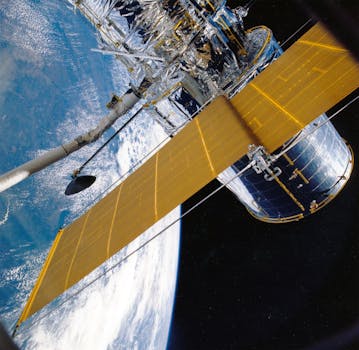
Beyond Earth: How Recent Advances Are Shaping Satellite Telecommunications is a rapidly evolving field that has seen significant advancements in recent years. Beyond Earth: How Recent Advances Are Shaping Satellite Telecommunications, the use of satellites for communication purposes has become increasingly important, enabling global connectivity and facilitating the exchange of information across the globe.
Satellite telecommunications have come a long way since the launch of the first commercial communications satellite, Intelsat 1, in 1965. Today, satellite telecommunications play a vital role in providing internet access, mobile connectivity, and television broadcasting services to remote and underserved communities around the world.
Advances in Satellite Technology
Recent advances in satellite technology have improved the efficiency, capacity, and reliability of satellite telecommunications. One of the key developments in this field is the introduction of high-throughput satellites (HTS), which offer faster data speeds and greater bandwidth than traditional satellites. HTS have enabled the widespread adoption of satellite-based broadband services, providing internet access to millions of people in remote and underserved areas.
Another significant advancement in satellite technology is the development of reusable launch vehicles, such as SpaceX’s Falcon 9 and Blue Origin’s New Glenn. These launch vehicles have significantly reduced the cost of launching satellites into orbit, making it more affordable for companies and organizations to deploy satellite constellations and provide global coverage.
Satellite Constellations and the Internet of Things (IoT)
Satellite constellations, such as those being developed by OneWeb, Amazon’s Kuiper Systems, and SpaceX’s Starlink, are designed to provide global internet coverage and enable the widespread adoption of the Internet of Things (IoT). These constellations consist of hundreds or even thousands of small satellites that work together to provide high-speed internet access and enable the exchange of data between devices.
The IoT is a network of physical devices, vehicles, and other items that are embedded with sensors, software, and connectivity, allowing them to collect and exchange data. Satellite telecommunications play a critical role in enabling the IoT, providing the connectivity needed to support the exchange of data between devices and facilitate the development of smart cities, smart homes, and other IoT applications.
Challenges and Opportunities
While recent advances in satellite telecommunications have transformed the way we communicate beyond Earth, there are still several challenges that need to be addressed. One of the key challenges facing the satellite telecommunications industry is the issue of space debris, which poses a significant threat to the safety and sustainability of satellite operations.
Another challenge facing the industry is the need for greater regulatory clarity and cooperation between governments and industry stakeholders. The development of satellite constellations and the IoT requires a coordinated approach to regulation, ensuring that the benefits of these technologies are realized while minimizing the risks and challenges associated with their deployment.
Despite these challenges, the opportunities presented by recent advances in satellite telecommunications are significant. Satellite telecommunications have the potential to bridge the digital divide, providing internet access and mobile connectivity to remote and underserved communities around the world. They also have the potential to enable the widespread adoption of the IoT, facilitating the development of smart cities, smart homes, and other IoT applications.

